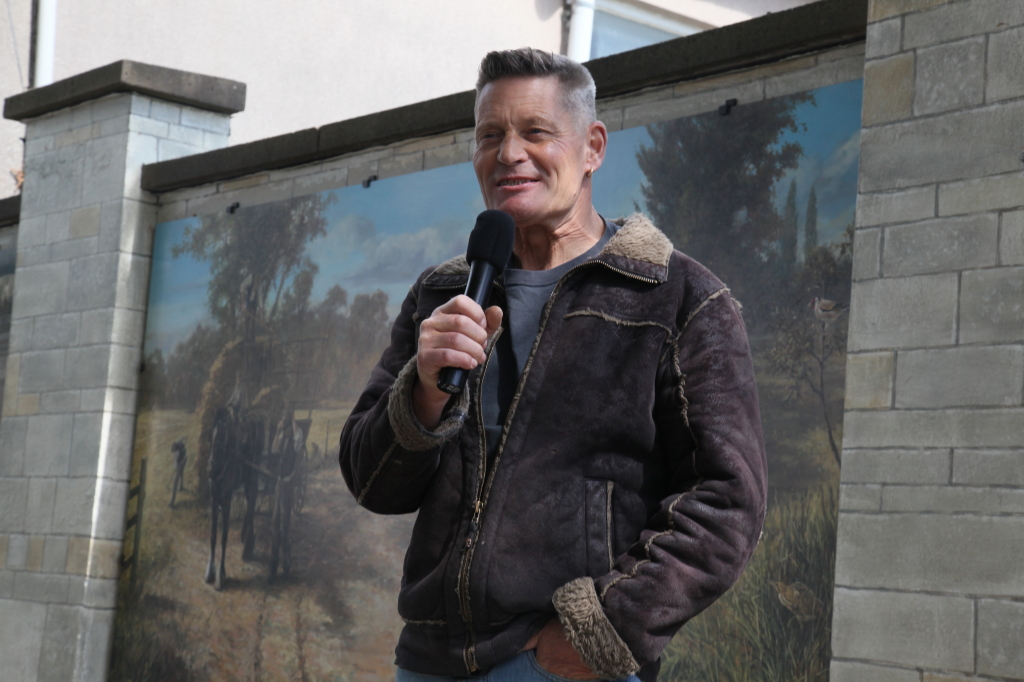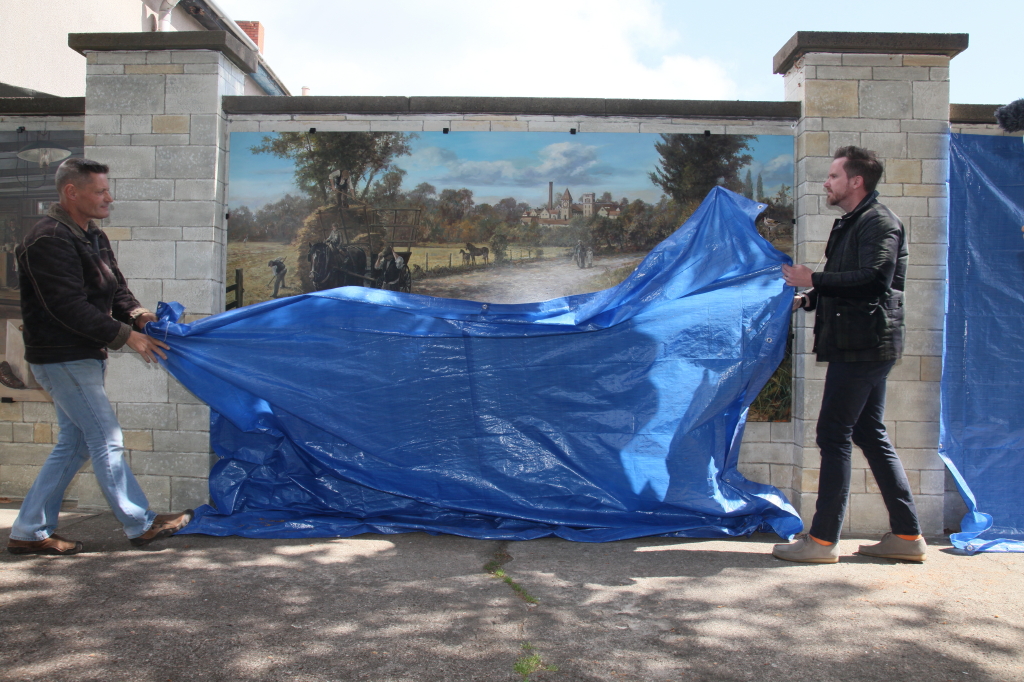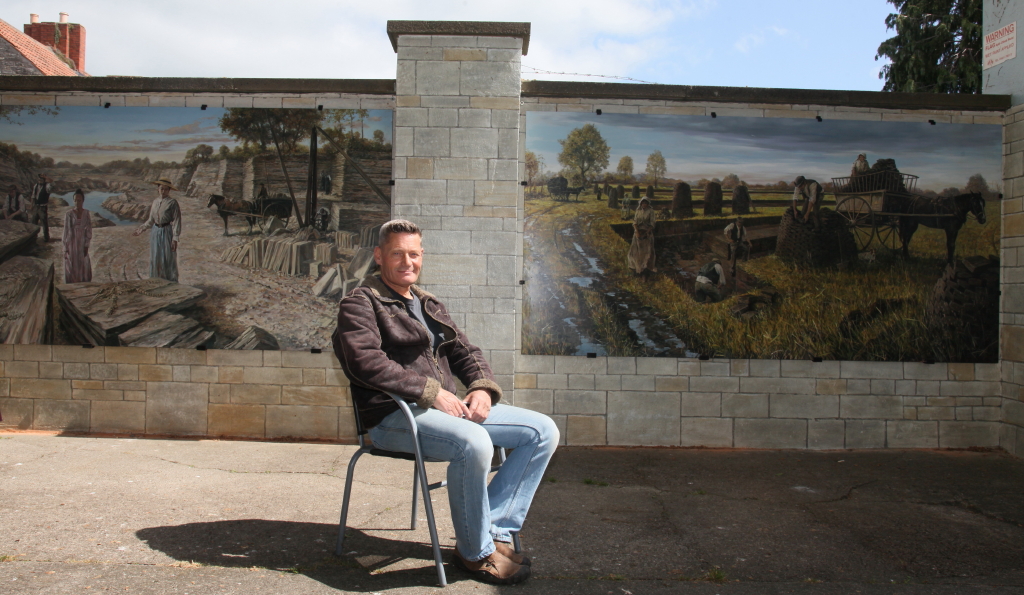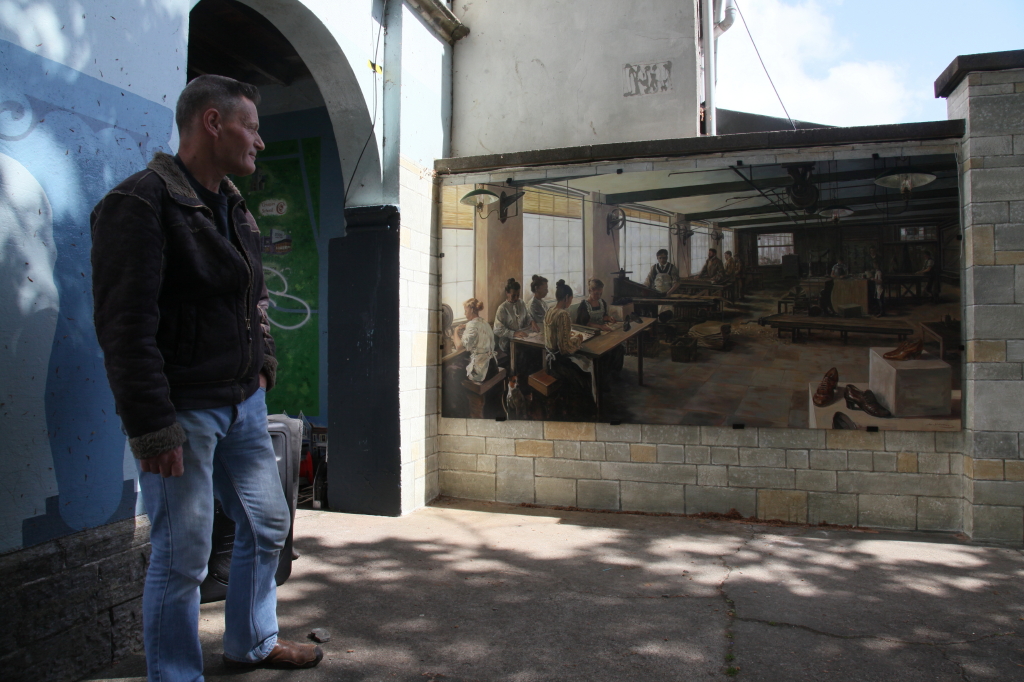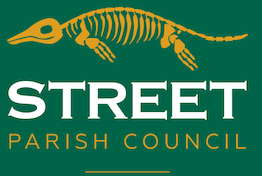Street Parish Council working in partnership with Street Library Trust and Mendip District Council commissioned 4 exciting new murals for the wall of the Library Gardens (BA16 0HA) from talented local artist Jonathan Minshull. Funding for the project came from a Mendip Creative grant and a smaller grant from a local charitable trust. The stunning murals based on the history of Street were unveiled on the 14th of May 2022 and are pictured below. They are incredibly detailed and must be seen in real life, so be sure to plan a visit. You can read the story behind each section of the installation here:
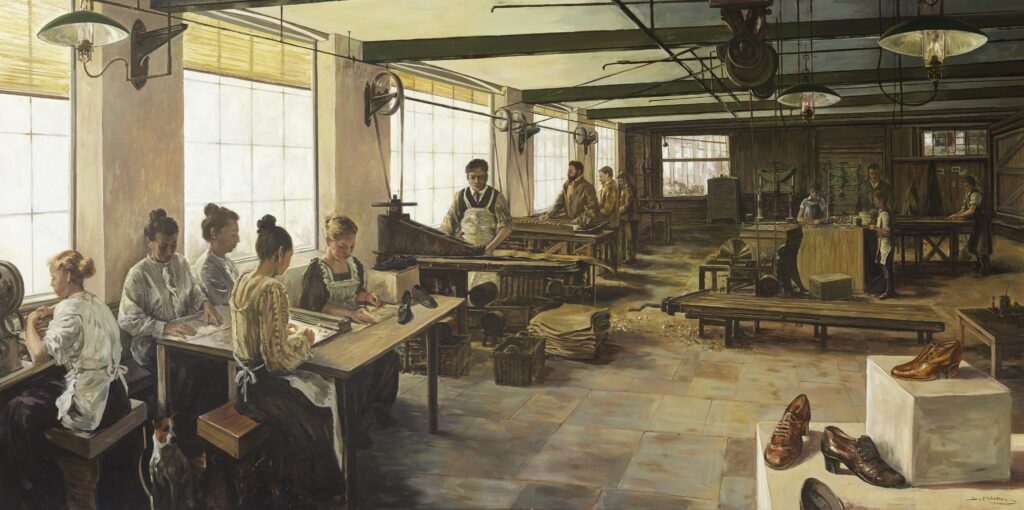
This panel represents the shoemaking process during Edwardian times inside the old C & J Clark’s factory buildings in Street, around 1900 -1910.
In 1825 James Clark began the production of woollen slippers and later of shoes and boots. The business expanded under his son, William, with profits going back into employee welfare, housing and education, reflecting the Quaker heritage of the family. The painting shows different stages of the shoe production process from cutting the leather to the finished shoes. The stages would normally have taken place in separate rooms with rows of each machine and their operators or the workers on the hand finishing process all working on the same tasks in a particular area. They have been brought together here into one space. The machines would have been powered from central driveshafts and belts connecting to flywheels. The rooms would have been gaslit with a network of pipes and lamps and mostly had flooring made of the locally quarried stone.
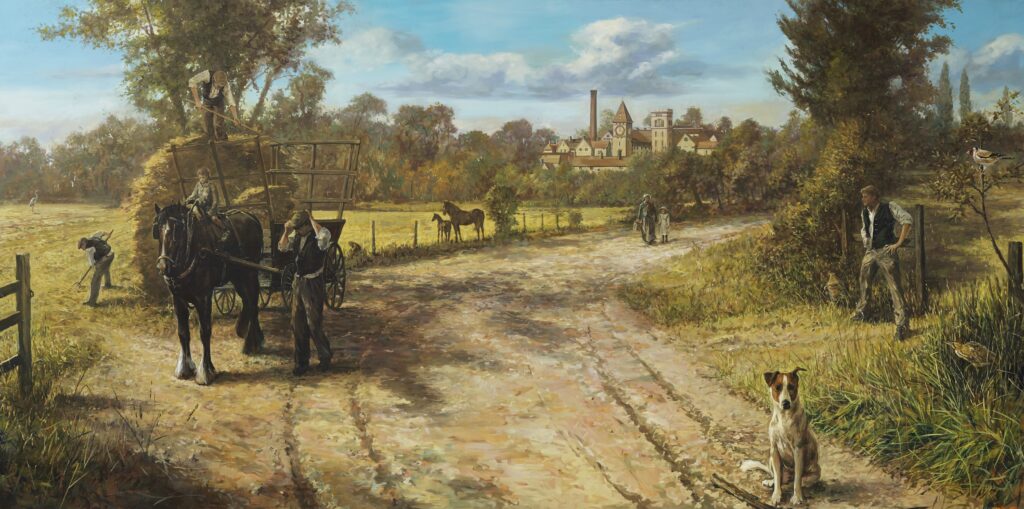
This scene shows summer hay harvesting in the meadows to the south of the Clark’s factory buildings in Street in Victorian times around 1860 to 1880.
Although mechanisation in agriculture was progressing through this period, much of the work such as loading hay was still done by manual labour and transportation was by horse and cart.
The viewpoint is from near the bottom of Elmhurst Lane looking back northward towards the village with the water tower and clock tower of the shoe factory visible. The factory was established in 1829 but the main block dates from 1857. The painting shows a lady and her granddaughter approaching along the road from the village, bringing refreshments for the workers. But the young man on the right has already started with a tankard of cider from the flagon. Included in the image are local wildlife species such as the bittern, heron, goldfinch and otter.
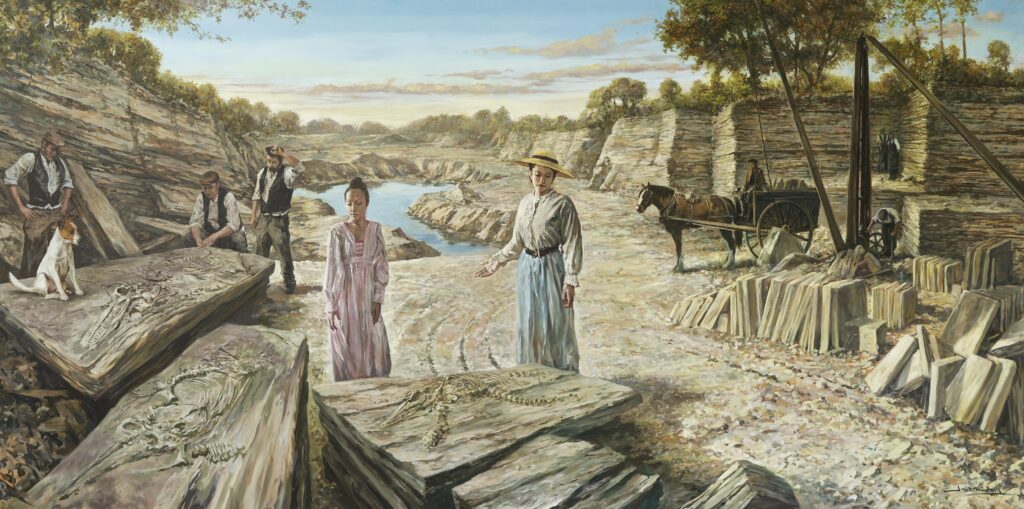
The image shows the discovery of ichthyosaur fossil specimens at one of the Street “blue lias” limestone quarries in the 1850s. Here, some recent discoveries have been dragged to near the quarry entrance ready for transportation to the recently started Clark’s collection and a lady from the village has brought her daughter to see the fascinating finds.
Quarrying in the area has a long history and in the 19th century production was at a high with stone being used for the construction of the Clark’s buildings, amongst others. The lifting machinery and system of working shown is based on historical photographs of local quarries. In June 1835, John Steel made it known that there was a fossil lying in Mogs quarry. Through the 1830s and 40s many fossils were found in local quarries and Street Urban District Council chose the ichthyosaur as their symbol in 1894. Alfred Gillett assisted the Clarks family in acquiring a good collection through this time. They were first displayed in Glastonbury Town Hall in 1880, but the fossils were soon moved into a purpose-built Geological Museum in Crispin Hall in Street, which was opened in 1887. Since Many Anning in 1823, famously made her discovery of the first complete Plesiosaur fossil, such artefacts aroused much interest when they were found and were starting to radically change perceptions of the age and evolutionary history of the Earth. The fossils in the image are accurate representations of the actual fossils in the Clark’s Collection, which are of exceptional quality.
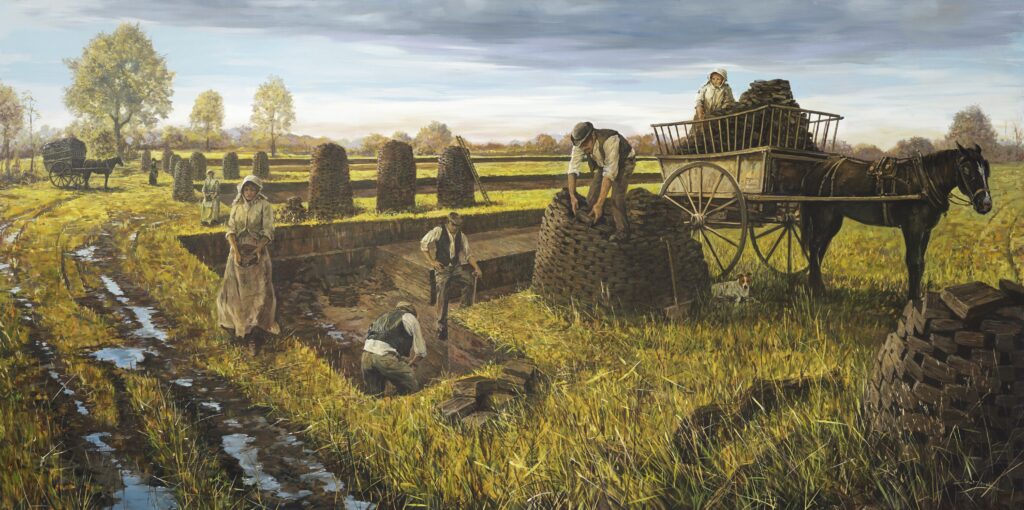
This panorama shows the manual process of peat extraction from the levels around Street at the turn of the 19th and 20th centuries, before mechanisation. The peat was cut into blocks called “mumps” or “turves” and stacked to dry in tower-like formations called “ruckles”, before transportation by horse and cart.
Peat is the sedimentary build up of organic matter such as reeds, sedges, mosses and even trees. Peat cutting on the moors goes back to Roman times when large wetland areas were drained.
In the 19th century, each parish would have an area of peat moor for grazing, for thatching reeds and fuel. Peat was used mainly as a fuel and dried and burned for heat in homes in the wintertime. The lower costs of coal for burning at the start of the 20th century meant that alternative uses for peat had to be found and so today it is used mainly as a soil supplement with horticultural applications. It was a manual process which occupied whole local families. It was hard physical work with the wet peat being heavy before drying, and ruckles were taller than a man and contained around a thousand turves. When dried out, the turves were hand loaded onto carts and drawn by horse to the local towns and villages.
The following photos are courtesy of Mark Adler, Mendip Times:
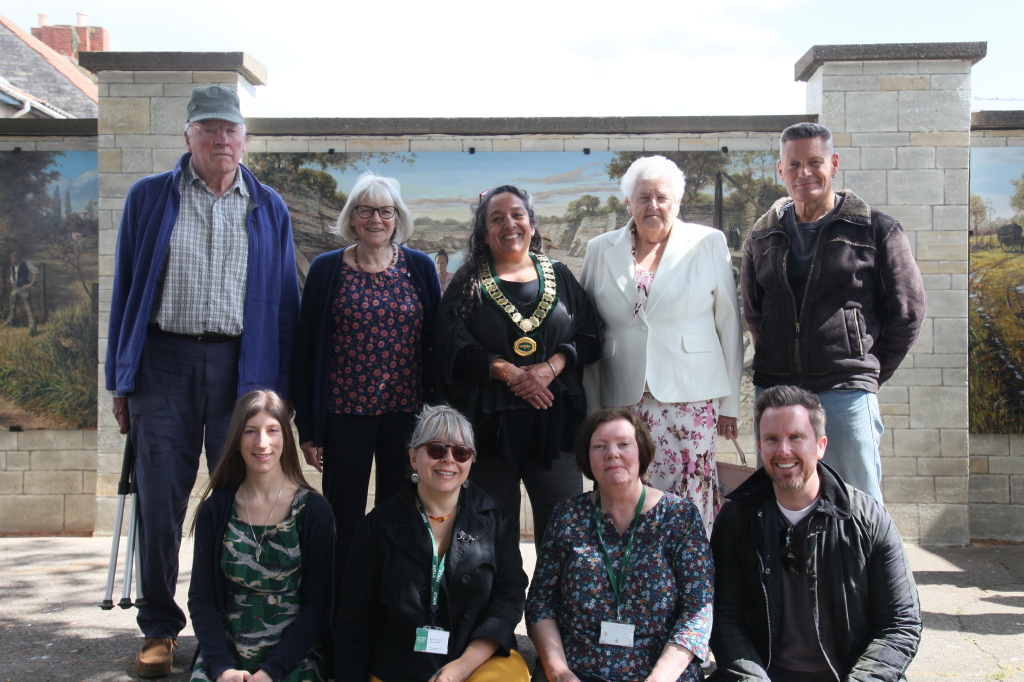
Top Row (Left to right): Richard Clark – Street Library Trust, County & District Cllr Liz Leyshon, Cllr Laura Wolfers – Chair of Street Parish Council, local resident Mrs Mary Davies, Mural Artist Jonathan Minshull
Bottom Row (Left to Right): Becca Wormald – Alfred Gillett Trust, Sam Cullen – Alfred Gillett Trust, Linda Ruff – Street Parish Clerk, Chris Davis – Centre Director, Clarks Village & Chair of Street Chamber of Commerce.
